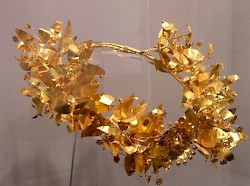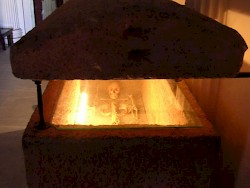Ada
Q235788Ada: sister and wife of Idrieus, after his death satrap of Caria between 344 and 340, member of the Hecatomnid dynasty.
Ada was a daughter of Hecatomnus, the founder of the Hecatomnid dynasty of satraps of Caria. Not only her father, but also her oldest brother Maussolus, Ada's sister Artemisia (who had been married to Maussolus), and her brother/husband Idrieus had occupied the office, which had been in the family for almost half a century when Idrieus died in 344. Maussolus had greatly expanded Carian power, Artemisia had secured it, and Idrieus had continued to increase the prestige of Caria. However, when he left the satrapy to Ada, he made a mistake, because the youngest brother, Pixodarus, felt offended.

Adherents of the two members of the royal family quarreled, and in 340, Ada was expelled from her capital Halicarnassus (modern Bodrum). Pixodarus was now in charge of the city. However, Ada still received support from the countryside and kept possession of the fortress of Alinda. The dynasty was discredited, and when Pixodarus died in 334, the Achaemenid king Darius III Codomannus appointed a Persian named Orontobates as satrap.
He was married to a daughter of Pixodarus, but it is unknown when this happened. However, it is likely that the wedding was celebrated before 334. If Pixodarus had died without son-in-law, Darius could simply have solved the problems in the weakened satrapy by recognizing Ada; the fact that he did not, suggests that Orontobates had already become a member of the family with a claim to the office. However, his position was weak, and as a consequence, he could not send troops to the Persian army that met the Macedonian commander Parmenion in 336 and 335.

In the spring of 334, Parmenion received support from his king Alexander, who quickly defeated the Persians at the Granicus and marched to the south, where Sardes and Miletus were captured. Proceeding to Caria, he allied himself to Ada and received the surrender of Alinda. She adopted the young Macedonian as her son, and he reappointed her as satrap. Unfortunately, he still had to capture her capital, and Halicarnassus was not an easy city to take. Its walls had been built by Maussolus and were designed to ward off attacks with the recently developed catapults. Besides, Orontobates employed Greek mercenaries, commanded by an excellent general, Memnon of Rhodes. Alexander was able to take the living quarters of Halicarnassus, and left a garrison to continue the blockade of the citadel. It surrendered after a year; Memnon died a natural death and Orontobates' fate is not recorded.
Ada seems to have remained satrap of Caria until 326. Turkish archaeologists claim to have discovered her tomb, and her bones have been transferred to the Archaeological Museum of Bodrum, which is situated on the site of the citadel of Halicarnassus that Alexander had been unable to capture.